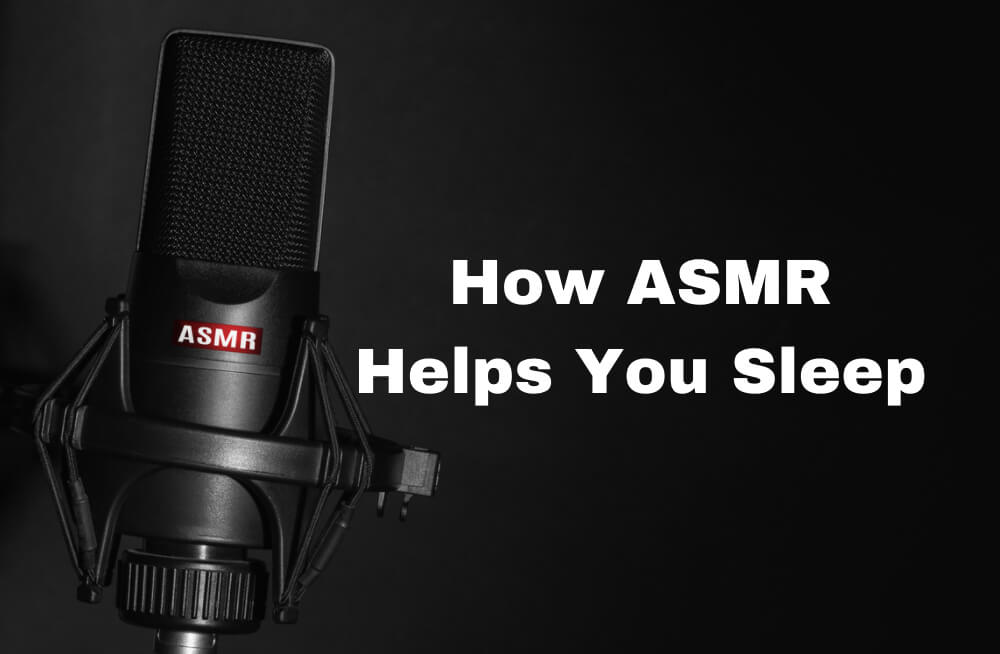How ASMR Helps You Sleep

The autonomous sensory meridian response is the feeling of relaxation and a tingling sensation triggered after thinking about, listening to, or seeing certain sights and sounds. The sights and sounds are generally relaxing in nature, like rain or the view of the ocean or a waterfall or a loved one’s face.
There is very little research into the benefits of ASMR for aiding sleep. There is, however, anecdotal evidence and current studies that ASMR may help some people sleep better.
While there is no hard science behind ASMR, what we know about how it works is consistent with claims that it improves sleep. For example, ASMR appears to activate regions of the brain associated with calming, sleep-inducing hormones like dopamine and oxytocin.
Among people who use videos or audio clips to induce ASMR, 82% use ASMR to help them fall asleep. It is the second most common reason people use ASMR media, with overall relaxation being the most common reason. Bedtime is also the most popular time to use ASMR media, with 81% of respondents in one study reporting that they preferred to listen or watch just before falling asleep. Only 6% preferred to use ASMR media before noon.
Examples of ASMR
Some examples of ASMR are gentle rain sounds, tapping, whispering, and other soft sounds. What triggers the response is different for each individual; some swear by it, and others say it doesn’t help. Some people achieve this state by watching videos and listening to sounds. Others can do it simply through meditation or thinking about the sound that makes them feel good.
It Isn’t for Everyone
ASMR is a very personal experience. A video or sound clip that triggers the response in one person might not do the same for another. A sound that may be soothing for one person may sound gross to another.
One problem with today’s ASMR is that most of it is video-based. The science is clear that blue lights mess up your body clock and should be avoided two to three hours before bedtime. Plus, listening to music or sounds that intrude on your thoughts can also stop your sleep in its tracks, so you have to experiment with various ways to induce the feeling.
How to Use ASMR for Sleep
If you want to try ASMR using video, try it two or three hours before bed by watching a few videos to signal to your mind it’s time to do your nighttime getting ready for bed ritual. That way, the blue light won’t interfere with your sleep. Do this with your loved ones by gazing into each other’s eyes and giving each other a scalp massage.
Since not everyone experiences ASMR, the first step should be determining whether or not you can. So try a variety of triggers. Experiment with different videos or sound clips.
Most people prefer a quiet, relaxed environment when using ASMR. The majority also prefer using stereo headphones, as these provide a greater depth of sound. However, standard headphones can be uncomfortable to wear during sleep, so people who use ASMR to fall asleep may want to invest in a pair of sleep headphones that sit flat against the head.
Try Meditation
If you find a sound or sight that does trigger your ASM response, you can call this up during meditation instead of using devices that mess up your body clock. This is the best method for including ASMR if you really want to use it for sleeping purposes. As you meditate, try to see and hear the sights and sounds you wish to get the results you need.
Get Eye Contact
One thing that can trigger your ASMR is to make eye contact with your loved ones. The intimacy and companionship feel good. This is one reason some of the videos on YouTube include the presenter looking right into the camera and into your eyes. You can do this with your family instead of a stranger if they’re around, and it will work in person as well as it works via video.
Some sounds you might want to conjure up include whispering, blowing, scratching, tapping, page-turning, writing, typing, clinking, humming, buzzing, chewing, sticky fingers, water droplets, clock ticking, motor humming, and a cat purring. Some physical expressions of ASMR are hair brushing, playing with hair, massage, especially scalp massage, and so forth.
It’s worth remembering that ASMR used alone is unlikely to be as effective as ASMR combined with good sleep hygiene. For example, many people use their phones to access ASMR media, but the blue light emitted from smartphones can have a negative effect on sleep. ASMR can also be combined with relaxing pre-sleep exercises or other ways of winding down before you sleep.
